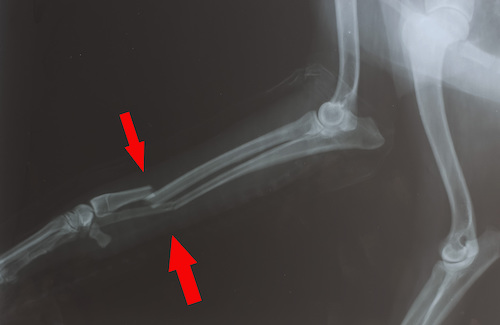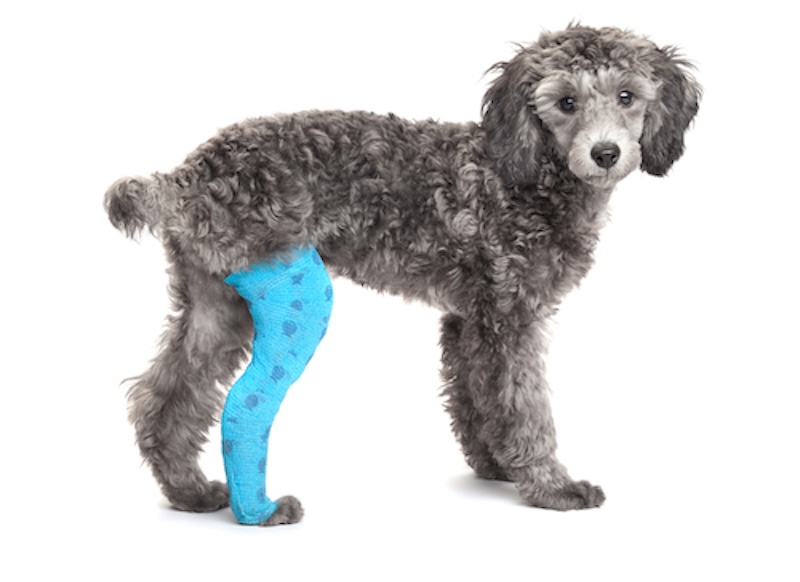
The types of fractures you get would be ones that are complete or partial. So, when you have a complete fracture, normally those two ends of bone will start to move away from each other and that is when it does become difficult to weight-bear and very painful. The other type you get is the partial ones, where they don’t it go all the way through the bone, or they may be in a different direction along the bone and therefore the bone will stay intact for the most part and the animal may still be able to weight-bear. Some fractures are closed and that means that they have happened underneath the skin and you would not necessarily see them. The other ones are the open fractures and that is where it will happen and a piece of bone will then come through the skin and so you will see an external wound there and maybe see a bit of bone pointing out of that wound as well.
In the cases of open fractures, there is a really high risk of infection entering that wound and getting into the bone and that is a really serious condition when that happens. So if that happens, as a first aider, the best thing you can do, if the animal will let you, is to cover that wound with a bandage or dressing of some kind in order to prevent infection entering it, until you can get them to the vets. It can be quite tricky to get your animal to the vets, especially if they fractured more than one limb because they will find walking quite difficult then. Normally, animals are very good at holding up an affected limb and walking on three legs. And if that is the only way you can get them in, then that is what you should do.
With smaller dogs and with cats, the best thing would be to get a carrier and to pop them in there and then safely transport them without having to manhandle them too much. Because every time you touch that leg or touch the animal, there is a chance of the bones, the fracture sites, moving and making the fracture even worse than it was when it first occurred. Whenever you have a fracture, it is going to be very painful for that animal and the best thing you can do is to mobilize the fracture sites. But in doing that, you need to be very careful that you are not causing harm to yourself. The dog or cat affected may be in so much pain that touching them anywhere could result in them trying to bite you. So if that is the case and in extreme situations where you cannot get close to a dog or a cat, it might be that you need to phone for your vet to come out. And in most situations, that would be possible. And what they would normally do is manage to give them sedation and then move them safely without hurting them anymore.
In some situations, it might be possible to splint a fractured leg, but you need to be really careful with what you use and what you are doing with this. So, if you have a fracture and then you are applying something heavy, a splint around that leg, you are weighing down that leg and it may then act as a pendulum. And especially if that splint is placed in the wrong position and it is putting pressure on the fracture sites, again, you end up causing more harm than trying to protect the leg. So, in general, unless you know exactly where that fracture is and you have advice from the vet on the phone, we would not advise that you splint the leg.
